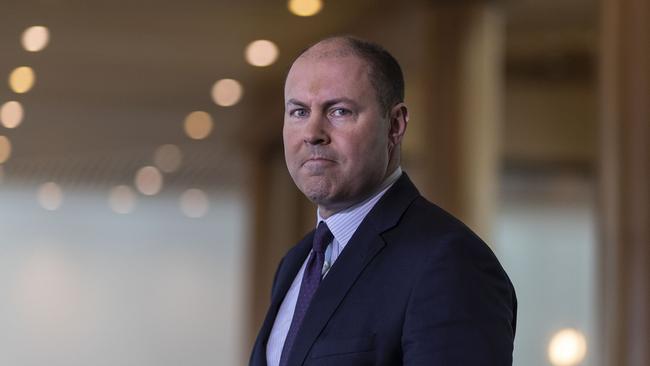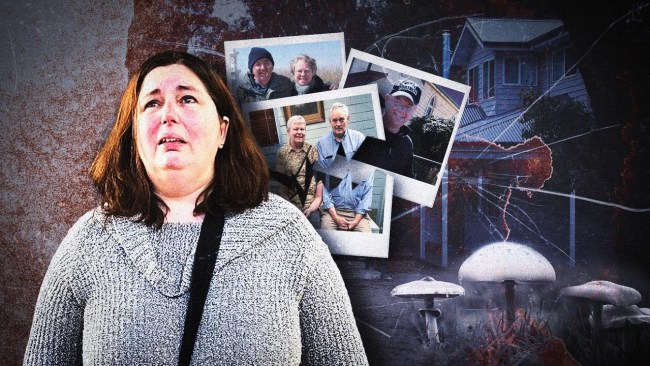State premiers will bear the risks of lockdowns on their own
When the federal Treasurer asked his cabinet colleagues to end most Covid-19 emergency payments to workers and businesses at 80 per cent vaccination rates, his message was clear.

When Josh Frydenberg asked his cabinet colleagues this week to end most Covid-19 emergency payments to workers and businesses at 80 per cent vaccination rates, his message was clear. “The states make all the decisions about lockdowns and then just send us the bill,” the Treasurer told them.
For weeks, pressure was building on the Morrison government to find a way to wrest control of the pandemic from premiers who were threatening to delay or ignore the national road map to freedom. A circuit breaker was needed.
With the states in control of lockdowns and border closures, the strongest lever available to the government to pressure the premiers was federal Covid-19 emergency payments. By cutting them off at 80 per cent double vaccination rates, the political and financial risk of ongoing lockdowns would be reversed. It would be borne exclusively by the premiers, especially Victoria’s Dan Andrews and by NSW’s incoming premier who would own the fast-growing disenchantment with lockdowns in their states.
Mr Andrews lashed out at cabinet’s decision, describing it as “a very simplistic and quite a binary view” that was “not leadership”.
“I don’t know that it’s necessarily borne out by the national plan, and it may not … be borne out by the epidemiological realities on the ground at that time,” he said.
But the move to cut most federal emergency payments to workers and businesses has been quietly plotted among key cabinet members for weeks. The urgency of such a move has only grown as the national road map for a unified reopening of the country has frayed with Andrews threatening to pause his reopening plans and premiers such as Queensland’s Annastacia Palaszczuk and Western Australia’s Mark McGowan threatening to keep their borders closed even after reaching the agreed road map target of 80 per cent. Polls showed it was the federal government that was taking much of the political hit for the actions of the premiers.
This week’s cabinet decision means more than 1.5 million people in the locked-down regions of Victoria, NSW and ACT will have their Covid disaster payments of up to $750 a week phased out over two weeks once vaccination rates reach 80 per cent.
Federal financial support for Covid-affected businesses will also end at 80 per cent. The government says the lockdowns are costing the economy about $2bn a week and it has been spending some $1.5bn a week in disaster payments and business support.
Frydenberg first flagged the possibility of ending the federal emergency Covid payments in an interview with the ABC’s 7.30 on August 19, saying there should be “no expectations the commonwealth will continue to provide emergency economic assistance to the quantum, to the size and to the scale that we’re doing right now”.
It was only after that interview that Frydenberg began to work on a plan to end payments in conjunction with Emergency Management Minister Bridget McKenzie, Health Minister Greg Hunt and Social Services Minister Anne Ruston. That work gathered pace in recent weeks, fuelled by a growing mistrust within the Morrison government of the premiers who seemed to treat the agreed national road map with growing disdain.
On the health front, Frydenberg held close three-way consultations with chief medical officer Paul Kelly and Hunt about whether ending the disaster payments would add to the Covid risk because people would be spending less time at home. It was determined that this would not be a major issue because it would occur only when the high 80 per cent vaccination level was reached.
On the economic front, Frydenberg was driven by several key considerations. He had been encouraged by the economy’s better-than-expected performance after the ending of the JobKeeper payments, and with business and private savings ratios still high he was convinced that there would be little economic fallout. What’s more, the budget was under growing pressure from the massive payouts that had to end at some time.
He consulted business groups about the impact of cutting business support with the obvious risk that it will cause some struggling businesses to fail. But Frydenberg decided it was better at 80 per cent vaxxed to let businesses sink or swim in normal market conditions and to give them generous notice that payments would be ending. In any case, many are experiencing growing labour shortages because of the disincentive to work caused by disaster payments.
Frydenberg and his colleagues considered several options to reduce assistance, including by tightening eligibility for Covid disaster payments rather than ending them. But in the end it was decided the best course was to end them entirely. Morrison, who was also involved closely in the process, wanted the two-week phasing out to be included in the plan.
But hovering over all these factors was the political imperative for the Morrison government of trying to hold together the national road map out of the pandemic.
The proposal to end the payments went through the ERC process before reaching cabinet on Tuesday where the support for the plan was unanimous.
That same day, Frydenberg called all eight state and territory treasurers (four of whom are also premiers) to explain the move. Even though the decision does not immediately affect states such as Queensland and WA, it may in the future because Covid-19 will enter when they reopen, raising the potential for future lockdowns.
But the cabinet’s decision does have risks attached. Almost everything about the virus has so far proved to be unpredictable, and if new variants of the virus emerge then the government may have to adjust its position accordingly.
Welfare groups have also attacked what they have called the “snap decision”. “It is unconscionable to use broad vaccination rate data as the mechanism to cut off income support to people without paid work, regardless of whether a lockdown has lifted or what the actual vaccination rates are for a range of at-risk groups,” Australian Council of Social Services chief Cassandra Goldie said.
But Frydenberg says the message to premiers is clear. “Stick to the plan, open up and give people their lives back,” he says. “We can’t live in lockdown forever.”




To join the conversation, please log in. Don't have an account? Register
Join the conversation, you are commenting as Logout